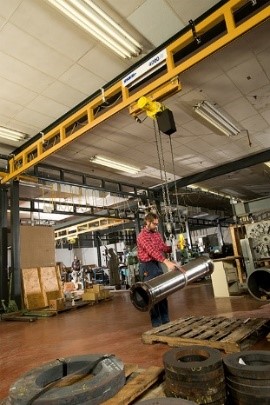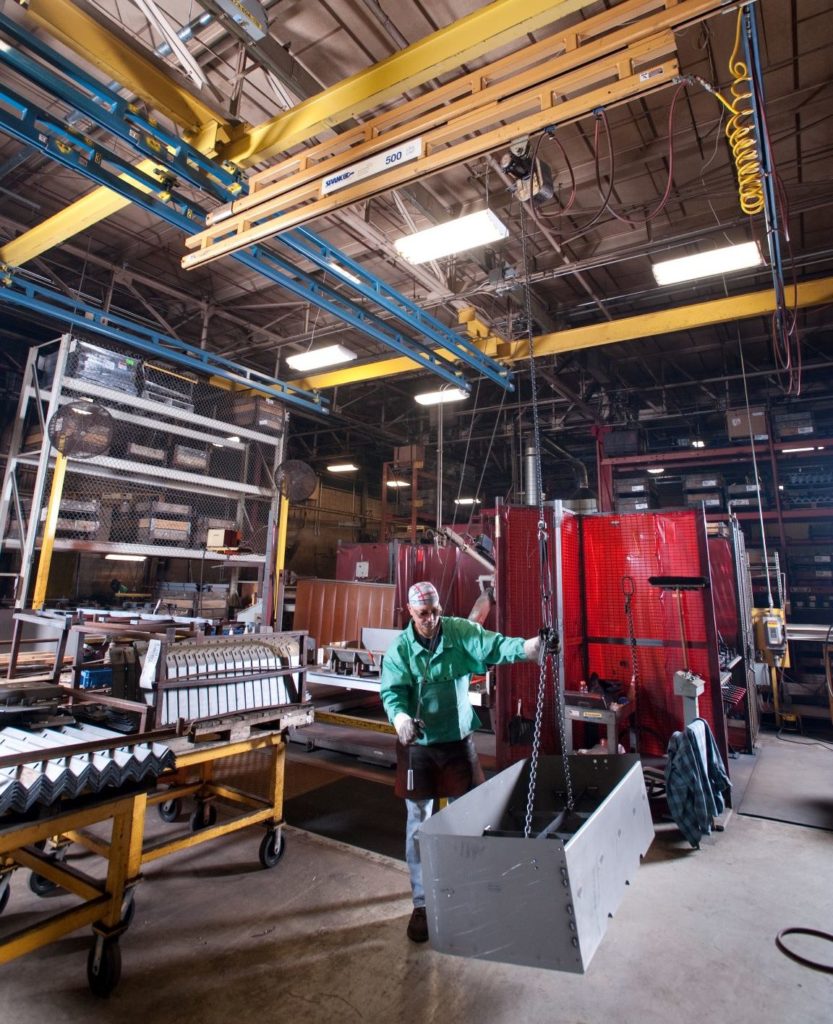
Material Handling Basics: What is a Workstation Crane?
May 19, 2020

Workstation bridge cranes can be installed by mounting directly to a building’s ceiling support structure, or with a freestanding system of columns. They move loads from side to side and backward and forward, covering a rectangular area. A lifting and horizontal movement device is put on a bridge beam of one or more horizontal girders, supported at either end by end trucks. The end trucks are attached at right angles to the bridge and move on fixed runways.
Typically, workstation bridge cranes are designed to move loads of 250 to 4,000 pounds along the bridge and under the runway. They can be easily relocated when needed, so they are ideal for rented facilities or when workflow changes are necessary. Workstation bridge cranes eliminate manual lifting, allowing a single worker to move loads from one workstation to another. They can supplement or replace multiple jib cranes or forklifts used for material handling and free-up existing overhead cranes for larger loads.
Many workstation bridge cranes can be installed as either ceiling-mounted or freestanding systems. Figuring out which mounting style to use depends on several factors, such as possible relocation or expansion opportunities, facility space optimization, and roof beam/truss availability.
Freestanding workstation bridge crane systems are effective and affordable when covering a large area or needing possible relocation in the future. Independent support columns mean freestanding systems can be installed in any facility regardless of available overhead building structures.

Spanco Workstation Bridge Cranes can be fully customized to fit your company’s needs. Spanco enclosed track systems are easy to operate and control. The low-profile steel track allows for greater use of ceiling space. The track’s V shaped profile prevents dirt accumulation inside the runways and maintains end truck and trolley-wheel alignment to ensure smooth movement. Runways can also be spliced together to virtually unlimited lengths to provide wall-to-wall coverage. Inverted-L columns can be used for applications that require uneven column spacing. Because these inverted-L columns don’t require a cross header, the opposite columns do not need to be directly inline.
Categories
Share this post
Contact us
Looking for the perfect fall protection equipment? Let us help!
